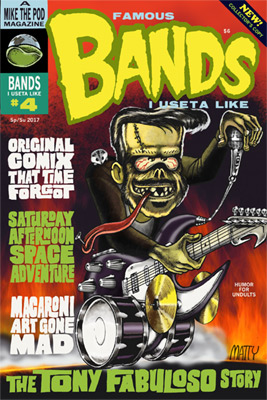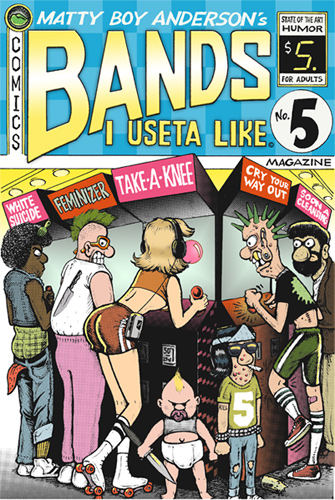When crafting a fictional universe, where does one begin? The introductory story, the characters, or the world itself?
Today, the general process involves cribbing from whatever made the most money previously, and changing just enough to keep from getting called a plagiarist. Actually, that’s not completely true; your average latter-day Hollywood mogul couldn’t care less about charges of appropriation. Cash comes first, imagination and progress later.
This was not the way it used to be.
Even in the Star Wars Prequels, so tiringly maligned on the web, the old traditions of craftsmanship and production design were utilized. Although the viewer can’t possibly see it, literally, the very fabric of the costumes worn therein is hand-crafted and unique, a human interpretation of a pattern from a galaxy far, far away.
Just like the space station in 2001: A Space Odyssey. As I often say, see the difference? Artists interpreting imagination for a film production. As crucial as the script, or the actors, or even the director.
If you ask yourself, “why couldn’t they come up with a story or dialogue as good as the visuals?”, go sit this one out. You’re not analyzing film, you’re trying to supplant your own personal agenda, regarding it. Why don’t beautiful women do volunteer landscaping? Because they don’t have to, that’s why. Beauty may not be love, but it’s clearly more visible.
Most creative persons dream of building their own universe, and filling it with living creatures. For a few, it’s the extension of a God complex, but more typically, it’s an honest and playful desire to construct a “sandbox”, for others to explore with them. Watership Down and Wizard of Oz began life as tales told to entertain children. I won’t lie to you; entertaining children is what it’s all about.
Thus, at the dawn of the 1980s, master Muppeteer Jim Henson and English fantasy illustrator Brian Froud joined forces to shape the world of “Thra”, the setting for 1982’s The Dark Crystal.
The germ of the idea was long in Henson’s head; while snowed in at an airport hotel, he penned The Crystal, its genesis. Most curiously, Henson based the movie’s dogma on the “Seth material”, considered a cornerstone of New Age philosophy. From 1963 to 1984, a woman named Jane Roberts dictated to her husband what she claimed were the words of a “discarnate entity called Seth”.
John P. Newport, in his study of the impact of New Age beliefs, described the central focus of the Seth Material as the idea that each individual creates his or her own reality, a foundational concept of the New Age movement first articulated in the Seth Material. [Wikipedia]
Allowing for the faddish excesses of New Age culture in the 1970s, this is terrifically high-minded inspiration for a puppet show. Nowadays, bringing up a mystic channeler would get you kicked off the project before lunch.
Hey; maybe this is why the sequel has been delayed forever. And did you ever notice how almost all the powerhouse creators die young, under unclear circumstances? You can feel the absence of Jim Henson in the world of television and film today. You can’t hone skills the way he did anymore, on live TV. You can’t have abstract ideas and be allowed to entertain children. You can’t mount a dark, bizarre film that costs a pile of money, and be feted as anything but a folly. Disney locked it all down and sanitized it, as usual. Even if you beat them, they’ll smear you into the void. And if not them, Sony.

urUtt the Weaver, of the urRu. The book is huge and falling apart because it’s 34 years old. I don’t know a better way to show it here.
Brian Froud, known at the time for his incredible renderings of faeries and similar sprites, drew an astonishing amount of material for The Dark Crystal. Henson’s animatronic characters, groundbreaking in 1982, appear in several photos throughout The World Of The Dark Crystal companion book, also released that year. Once upon a time, not everybody in the audience was looking for the strings, and a fertile middle ground between puppetry and film was briefly sowed. Currently, filmgoers are considered “too sophisticated” to watch puppets on screen for two hours. Oh yeah, and the “language thing”.

Many pages feature onion-skin overlays, that reveal the hidden geometry in the props and character physiognomy. Think about how deep that rabbit hole goes.
(Strap in, folks. Here we go again.)
I hate to request this of you, but compare Return of the Jedi (1983) and The Phantom Menace (1999), specifically the portrayal of Jabba the Hutt. In Jedi, Jabba has extensive, subtitled dialogue scenes, spoken in his native Huttese (gibberish). In Menace, Jabba barely grunts out two lines, after being roused from slumber.
You could certainly argue that Jabba is less relevant to the Prequel, sure. But then, you’d have to ignore one terrible fact about present-day society.
You can get press by claiming you heard something you didn’t, just like that “backwards masking” jazz from the mid-1980s.
Fantasy movies now have to work around this shit. It doesn’t matter that there are no messages hidden; a claim with no evidence can do damage all the same. Listen to how the aliens speak in the Prequels. If it isn’t unintelligible, it’s baby talk. The Transformers in the Michael Bay movies follow the same formula. You can’t flesh out an alien language, like Panzer Dragoon, anymore. The ninnies won. Again. Hey, you can’t screen worldwide if you’re possibly cursing in Mandarin or Farsi, correct?
(Don’t leave. We’re back! WE’RE BACK!)

Random woodland critters from the “Darkened World”. Could all of these be realized as puppets? Would someone suggest CGI if it were made today? Where is the line of demarcation, and can moviemakers be expected to have any idea?
I would love to be proven wrong on that, and witness a fully realized fantasy film on par with The Dark Crystal in the future. But in order for that to really happen, the production would have to coincide with a serendipitous advance in technology. The Abyss, Titanic, Transformers (any), Lord of the Rings, A.I.; the list of examples goes on and on. Apocalypto utilized the “Technocrane”, allowing for previously unheard-of views of waterfalls and cliffs.
A new Dark Crystal would have to surpass the original on a technical level, and that’s a tall order. I brought up the Prequels because they also were criticized for stiff acting and wooden dialogue. Fair enough, if you’re looking for Eugene O’Neill. But out of the mouth of a beautiful woman? That’s too tall an order, especially for fantasy film.
Plus, in a made-up world, full of made-up characters, how would you determine what’s bad acting?
Why would that sort of thing matter, anyway? It’s fantasy. Beyond your imagination.
















You must be logged in to post a comment.